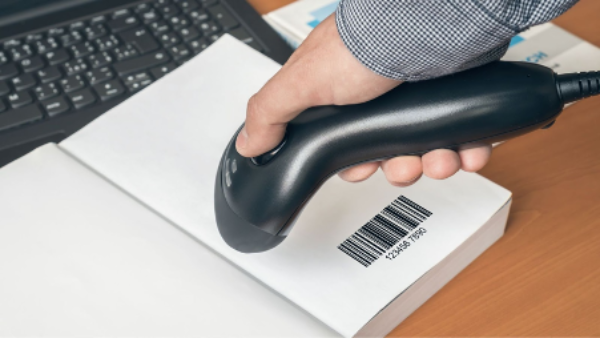Best Practices for Implementing a Library Barcode System in Educational Institutions


Barcode systems have been in use at libraries for quite some time now, and it is easy to see why. Barcodes make it significantly easier to maintain records and organize books, files, and other materials. However, much depends on the proper implementation of a library barcode system. Especially in large educational institutions with busy libraries, a good barcode system can streamline operations significantly.
Key Practices for the Implementation of a Library Barcode System
If you’re looking to implement a barcode system at your library, follow these practices to make the most of it and ensure streamlined operations.
1. Proper Labeling
Do not underestimate the toll poor labeling practices can take on your barcode-based processes. For instance, poorly placed or printed labels can be difficult to scan, leading to scanning errors and delays. The quality of the labeling material matters too. The labels on borrowed books undergo a lot of wear, which can damage them. Hence, it is imperative to print high-quality barcode labels and preferably laminate them for protection. You’d also want to standardize barcode label placement, ensuring they are easy to scan.
In regard to labeling, deciding on the barcode format to use matters too. ISBN (International Standard Book Number) barcodes are a popular choice at libraries. Designed specifically for books, ISBN barcodes make it easy to distinguish different editions of the same book. Most published books come with an ISBN barcode, which can potentially save you effort and resources on labeling.
Code 39 barcodes are great for book identification, inventory management, and library card scanning. Another popular option is the Code 128 barcode, which is particularly suited to tracking and cataloging books.
2. Investing in the Right Hardware
Choosing the right barcode scanning hardware for your library can be tricky. However, it is crucial that you invest in the right equipment. Scanners with poor sensors or processors are susceptible to errors and delays, leading to various inefficiencies. To truly streamline your processes, you need scanning equipment that’s precise and reliable, with sophisticated processors for quick scanning.
Even among high-end scanners, various factors come into play, such as portability, scanning technology, and connectivity. Laser scanners are generally the best choice for libraries, thanks to their quick scanning speed. As for portability, fixed-mount scanners are a practical choice for desk-based work, such as processing book issues and returns. For tasks that call for portability, however, such as scanning bookshelves or books on the go, it’s best to get wireless handheld scanners.
3. Choosing or Building Your Barcode Scanning Software
Getting the best scanners you can afford isn’t all – you also need good scanning software to back them up. Your scanning software directly influences the performance and efficiency of your scanners. You could even add new capabilities using the right software! While there are plenty of off-the-shelf solutions available, they might lack customization and often support limited barcode symbologies.
Commercial-grade barcode reader software SDKs bring together the best of both worlds. They are much easier to implement and save you the cost and hassle of coding the software from scratch. A robust barcode scanner SDK enables you to build software tailored to your library’s unique needs, implementing necessary features.
4. Investing in Modern Scanning Capabilities
The best library barcode scanner SDKs out there come with various special features, such as text recognition and batch-scanning. A barcode scanner integrated with text recognition capabilities can capture various additional data. This allows you to record information such as serial numbers and descriptions with ease.
Even with a fast and powerful barcode scanner, scanning every book individually can be quite time-consuming. This is where batch-scanning capabilities come into play. With batch scanning, you can capture a large number of barcodes in a single shot. This way, librarians get to capture multiple barcode labels at once, saving your staff a lot of time when scanning entire shelves or rows of books.
5. Adopting the Best Scanning Practices
Though easy to miss, poor scanning practices are responsible for a lot of inefficiencies. For instance, scanning a barcode in a poorly lit area can take multiple tries, taking up more time and effort. All it takes is to ensure enough lighting or to move to a well-lit area to perform the scans. When using handheld scanners, keeping your hand steady can reduce scanning errors.
A barcode scanner that isn’t configured to your unique needs can end up slowing down your librarians too. For instance, if your scanner is capable of capturing multiple barcodes at once but your staff only needs to scan one at a time, it’s best to switch to the single barcode detection mode. This not only reduces CPU usage but also saves power. Similarly, if your library only uses a specific barcode symbology, turn off other symbologies. This would prevent your scanner from accidentally capturing irrelevant barcodes.
Conclusion
To sum it up, implementing a capable and efficient barcode system in your library requires making informed decisions. From investing in the right hardware to choosing your barcode reader software, there’s much to decide on. A powerful scanner and a robust SDK solve more than half your problems.
However, it is ultimately for you to decide what features to implement, which barcode symbology to use, and how best to configure your scanning system. Explore your options to develop a tailored library barcode system that allows you to make the most of it.
Post Your Ad Here

Comments